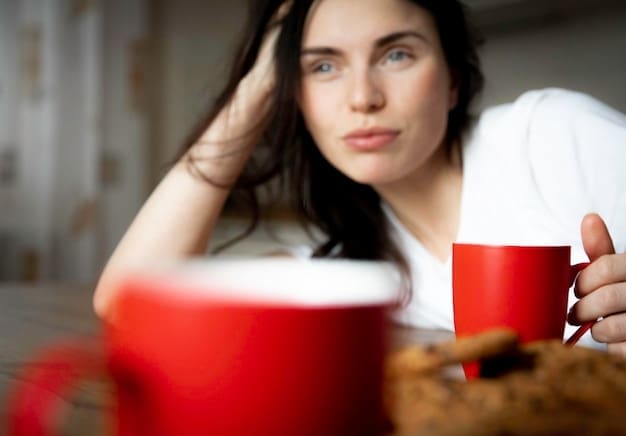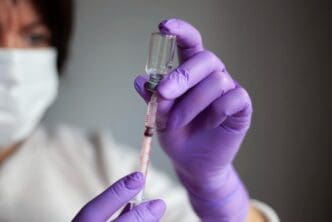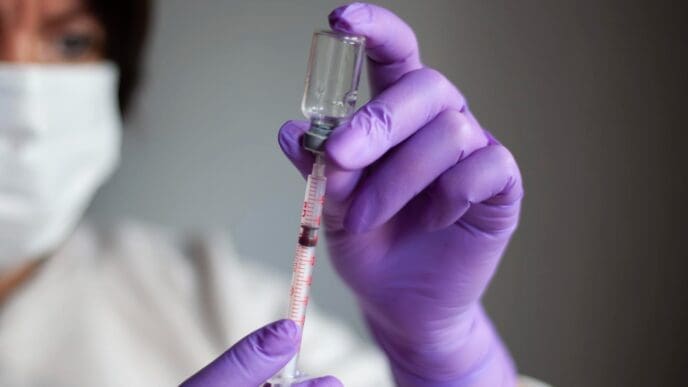For millions, the morning cup of coffee is a non-negotiable ritual, a cherished tool for shaking off sleep and sharpening the mind. Yet for a significant portion of the population, this beloved stimulant can be a double-edged sword, triggering or dramatically worsening feelings of anxiety. The link between caffeine and anxiety isn’t just a feeling; it’s a well-documented physiological response. When you consume caffeine, it directly stimulates the central nervous system and prompts the release of stress hormones, activating the body’s “fight-or-flight” system. This can produce physical symptoms—such as a racing heart, trembling hands, and shortness of breath—that are virtually indistinguishable from the symptoms of an anxiety or panic attack, creating a confusing and distressing experience for those who are susceptible.
How Caffeine Works in Your Brain and Body
To understand why your daily latte might be contributing to your unease, it’s essential to look at how caffeine interacts with your body’s intricate chemistry. It’s a powerful substance that sets off a cascade of events, starting in the brain.
The Adenosine Blockade
Throughout the day, a neurotransmitter called adenosine gradually builds up in your brain. Adenosine binds to specific receptors, slowing down nerve cell activity and causing you to feel sleepy. It’s your body’s natural sedative, signaling when it’s time to rest.
Caffeine molecules have a similar structure to adenosine. When you drink a caffeinated beverage, the caffeine travels to your brain and fits perfectly into these adenosine receptors, effectively blocking adenosine from doing its job. Instead of slowing down, your brain’s neural activity speeds up, leading to that familiar feeling of alertness, focus, and increased energy.
Triggering the ‘Fight-or-Flight’ Response
This increased brain activity is interpreted by your pituitary gland as a potential emergency. It sends a signal to your adrenal glands, located on top of your kidneys, to produce adrenaline (also known as epinephrine). Adrenaline is the primary hormone of the “fight-or-flight” response, designed to prepare your body for immediate, intense physical action.
The release of adrenaline causes a surge in heart rate, an increase in blood pressure, and a tensing of your muscles. Your liver also releases sugar into the bloodstream for a quick energy boost. In an ancient survival context, this response was critical for escaping a predator. In a modern office context, it can simply feel like a sudden, unexplained wave of panic.
The Overlap: When Stimulation Becomes Anxiety
The core of the caffeine-anxiety connection lies in the profound overlap between the physiological effects of caffeine and the physical symptoms of anxiety. Your body doesn’t necessarily know the difference between a genuine threat and a chemical stimulant.
Mimicking Anxiety Symptoms
Consider the classic symptoms of an anxiety attack: a pounding or racing heart, sweating, trembling, restlessness, and a feeling of being on edge. These are the exact same physical sensations produced by an adrenaline surge. When caffeine triggers this response, your brain must interpret what’s happening.
If you are already prone to anxiety, your brain is more likely to interpret these physical cues as a sign of danger or a loss of control. This cognitive interpretation—the thought “Something is wrong”—is the very essence of anxiety. The physical feelings fuel the anxious thoughts, and the anxious thoughts amplify the physical feelings.
A Vicious Cycle
This creates a vicious feedback loop. You drink coffee to combat fatigue. The caffeine causes your heart to race and your hands to feel jittery. You notice these sensations and, because you have a history with anxiety, you begin to worry that you’re having a panic attack.
This fear itself triggers the release of even more stress hormones, worsening the physical symptoms. What started as a simple physiological reaction to a stimulant has now spiraled into a full-blown psychological event. For many, caffeine is the unwitting spark that lights this bonfire of anxiety.
Who Is Most at Risk?
While anyone can feel jittery after too much caffeine, some individuals are far more vulnerable to its anxiety-inducing effects. Genetics, pre-existing conditions, and overall sensitivity play a significant role.
Individuals with Pre-existing Anxiety Disorders
Research consistently shows that people diagnosed with anxiety disorders, particularly panic disorder and social anxiety disorder, are hypersensitive to caffeine. Their nervous systems often operate at a higher baseline level of arousal, meaning it takes less stimulation to push them into a state of anxiety or panic.
Studies have demonstrated that when given a moderate dose of caffeine, individuals with panic disorder are significantly more likely to experience a panic attack compared to control groups. Their bodies and minds are already primed to interpret “fight-or-flight” signals as a catastrophic threat.
Genetic Caffeine Sensitivity
Your genetics also play a crucial role in how you handle caffeine. The speed at which your body metabolizes caffeine is largely determined by a gene called CYP1A2, which instructs an enzyme in your liver.
Some people are “fast metabolizers,” breaking down and clearing caffeine from their system quickly. Others are “slow metabolizers,” meaning the caffeine lingers in their body for much longer, prolonging and intensifying its effects. Slow metabolizers are more likely to experience negative side effects like jitters, sleep disruption, and, notably, anxiety, even from small amounts.
Caffeine-Induced Anxiety Disorder
The link is so well-established that the American Psychiatric Association’s diagnostic manual, the DSM-5, includes “Caffeine-Induced Anxiety Disorder” as a clinical diagnosis. This is diagnosed when caffeine use directly causes clinically significant anxiety, panic attacks, or distress that interferes with daily functioning.
This formal recognition underscores that for some, the relationship between caffeine and anxiety is not just a mild side effect but a serious mental health concern that warrants attention and management.
Understanding Dosage and Timing
Managing your relationship with caffeine requires understanding not just *if* you drink it, but *how much* and *when*.
How Much is Too Much?
The U.S. Food and Drug Administration (FDA) suggests that up to 400 milligrams of caffeine per day—roughly the amount in four 8-ounce cups of coffee—is generally safe for most healthy adults. However, this is a broad guideline. For someone with anxiety or high sensitivity, the “safe” threshold may be much lower, perhaps as little as 100 mg (one cup of coffee).
It’s vital to be aware of caffeine content in all sources, not just coffee. A 12-ounce can of soda can have 30-40 mg, a cup of black tea can have around 50 mg, and energy drinks can pack a potent 150-300 mg or more in a single serving.
The Role of Withdrawal
Ironically, trying to quit caffeine can also cause anxiety. If your body has become dependent on a regular intake, stopping abruptly can lead to withdrawal. The symptoms of caffeine withdrawal include severe headaches, fatigue, brain fog, irritability, and a marked increase in anxiety and depression.
This can trap a person in a difficult cycle: they feel anxious from withdrawal, so they consume caffeine for relief, only to have the caffeine itself trigger anxiety later. This highlights the importance of a mindful and gradual approach to reducing intake.
Actionable Steps: Managing Your Caffeine Intake
If you suspect caffeine is contributing to your anxiety, taking control is entirely possible. It begins with self-awareness and strategic adjustments.
Conduct a Personal Audit
Start by tracking your consumption for one week. Keep a simple journal, noting what you drank, when you drank it, and how much caffeine it contained. Alongside this, rate your anxiety levels throughout the day. This data will help you identify clear patterns and discover your personal sensitivity threshold.
How to Cut Back Safely
Quitting “cold turkey” is often a recipe for miserable withdrawal symptoms. A gradual taper is a much more sustainable and comfortable approach. Try reducing your intake by about 25% each week. For example, if you drink four cups of coffee a day, cut back to three for a week, then two, and so on.
Another effective strategy is the “half-caf” method, where you mix half-decaffeinated with half-regular coffee. This allows you to maintain the ritual while steadily lowering the dose. Replacing one of your daily caffeinated beverages with an herbal tea or decaf coffee can also be an easy first step.
Exploring Healthier Alternatives
Many people rely on caffeine for energy or for the comfort of the ritual. Finding healthy replacements is key to success. For a sustainable energy boost, focus on the fundamentals: prioritize consistent sleep, stay hydrated with water, engage in regular physical activity, and eat balanced meals to avoid blood sugar crashes.
For the ritual itself, explore caffeine-free alternatives. A warm cup of herbal tea, such as chamomile (known for its calming properties), peppermint, or ginger, can be just as comforting. Even a mug of warm water with lemon can satisfy the need for a warm morning beverage.
Conclusion
The connection between caffeine and anxiety is a clear physiological reality. While it remains a safe and effective stimulant for many, its powerful ability to activate the body’s stress response can directly cause or significantly worsen anxiety in susceptible individuals. The key is recognizing that the jitters, racing heart, and sense of unease after a cup of coffee may not be a random occurrence, but a direct biological consequence.
By understanding how caffeine works, identifying your personal sensitivity, and mindfully managing your intake, you can break the cycle. Taking control of your relationship with caffeine is a tangible and empowering step toward better managing your overall mental health and well-being in a world that often runs on it.












